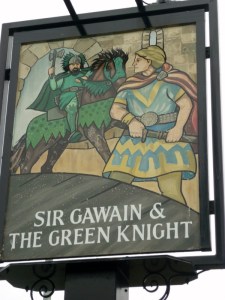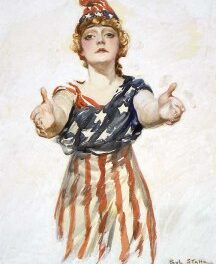We support our Publishers and Content Creators. You can view this story on their website by CLICKING HERE.
Here is my effort to construct a solid program of reading for a classical high school curriculum.
 Last month I wrote an essay for The Imaginative Conservative on “Classical Education and American Literature” in which I explained the rationale for the selection of titles by American authors for a high school literature curriculum. One of the comments posted to that essay requested a follow-up essay: “Any chance we could get the full book list? I know it takes work to give your rationale, so I won’t ask that much, but I’d be pleased just to get a sense of what you think ought to be on the curriculum!” In addition, I received an email a few days after the publication of the essay from someone who was starting a charter school requesting my thoughts on classical education as he prepared to design the curriculum for the new school. The following will be my effort to construct a solid program of reading for a classical high school curriculum.
Last month I wrote an essay for The Imaginative Conservative on “Classical Education and American Literature” in which I explained the rationale for the selection of titles by American authors for a high school literature curriculum. One of the comments posted to that essay requested a follow-up essay: “Any chance we could get the full book list? I know it takes work to give your rationale, so I won’t ask that much, but I’d be pleased just to get a sense of what you think ought to be on the curriculum!” In addition, I received an email a few days after the publication of the essay from someone who was starting a charter school requesting my thoughts on classical education as he prepared to design the curriculum for the new school. The following will be my effort to construct a solid program of reading for a classical high school curriculum.
The first criterion would be to design the sequence of readings in chronological order so that students would be getting an education in the history of literature and culture over their four years of studying the texts of the Great Books. The freshman class would read works from the pre-Christian era; the sophomores from the period of the Middle Ages; the juniors from the Early Modern period (1500-1800); and the seniors would read some of the great literary works of the nineteenth and twentieth centuries.
The Freshmen would read the three great epics, The Iliad, The Odyssey and The Aeneid, as well as all three of Sophocles’ Theban Plays, Antigone, Oedipus Rex and Oedipus at Colonus.
The Iliad teaches valuable moral lessons about pride preceding a fall and about the will of God being accomplished in the humbling of homo superbus, the man of pride; The Odyssey shows man as homo viator (wayfaring man) who must grow in wisdom and virtue on life’s journey in order to find his true home as pater familias, the father of a family. Both epics also teach priceless lessons about responsible and irresponsible femininity, especially in the comparison between the recklessness of Helen and the circumspect wisdom and virtue of Penelope. The Aeneid parallels The Odyssey in showing the hero as homo viator, the man whose life is a journey with a definite goal, which it is his responsibility to pursue at whatever personal cost to himself. It also illustrates, in the reckless and irresponsible relationship of Aeneas with Dido, the dangers of becoming “prisoners of lust”.
Antigone, the first of Sophocles’ Theban Plays, offers timeless lessons about the perennial tension between religious liberty and the secularist power of the state. Oedipus Rex highlights the mystery of suffering, or what C. S. Lewis called the problem of pain, whereas its sequel, Oedipus at Colonus, offers a solution to the mystery of suffering in the acceptance of suffering, the latter of which leads to the growth in wisdom and virtue of those who embrace the pains of life. The inclusion of Oedipus Rex on the syllabus without the inclusion of Oedipus at Colonus represents a significant sin of omission, which leaves the student floundering in a sea of seemingly senseless suffering without offering him the lifejacket of meaning that the latter play offers and which Sophocles clearly intended.
Moving into the sophomore year, we find ourselves in the Middle Ages. The first text to be studied would be Boethius’ Consolation of Philosophy, a work which serves as an invitation to the love of wisdom (philos-sophia) in the form of a story in which Boethius is visited and comforted by a beautiful woman, Lady Philosophy. Boethius’ employment of personified abstraction serves as an introduction to the student of formal allegory as a literary genre, as well as enabling abstract ideas to be presented in relatively simple form.
Next on the sophomore reading list would be the Old English epic, Beowulf, which shows that even the strongest and most powerful warriors need divine assistance to overcome the power of evil. In our own day in which “pride” and “self-help” are in the ascendant, the moral lessons that the Beowulf poet teaches serve as a reminder that “self-empowerment” does not overcome the power of evil but ultimately succumbs to it. Staying in the world of the Anglo-Saxons for a little longer, the students would also read a selection of Anglo-Saxon poetry (in modern English translation), such as “The Ruin”, “The Wanderer” and “The Seafarer”. Each of these is a melancholy meditation on mortality and mutability, in which life is seen as a vale of tears and a land of exile, or what Tolkien called the ”long defeat”, but in which there are glimpses of final victory in the ways of wyrd, the “weirdness” of God’s providential presence.
Following the student’s sojourn in Anglo-Saxon England, he will be fast forwarded to the High Middle Ages in Italy and to Dante’s Divine Comedy. It would be imperative that he doesn’t remain stuck in hell, which is what happens when only the Inferno is taught, but that he be brought into the light of the sun on Mount Purgatory and that he be allowed to ascend into the beauty of Paradise. If time does not permit the teaching of the whole work, it is better to select ten cantos from each of the three books than to read one book to the exclusion of either of the other two.
Returning to England, selections from The Canterbury Tales should be read. My personal choice would be the entirety of “The General Prologue”, in which the virtue of the saintly Parson and his equally holy bother, the Ploughman, serve as examples of goodness amidst the menagerie of miserable sinners with whom they are on pilgrimage. I’d also include “The Nun’s Priest’s Tale”, a delightful fable reenacting the story of the Fall of Man, which is set, appropriately enough, on April Fool’s Day. The final selection would be “The Parson’s Tale” which was intended by Chaucer to be the conclusion of The Canterbury Tales in both senses of the word. It was intended to conclude the work, thereby giving the saint the last word, not the sinners, while also summarizing the whole work’s meditation on the nature of sin with a theological treatise on sin itself.
The final selection of mediaeval literature for the sophomore year would be Sir Gawain and the Green Knight in Tolkien’s translation. In this way the year would end with a chivalrous tale of a knight in shining armour on a noble quest which leads to his being humbled that he might be exalted.
In the next essay, we will continue the noble quest for the ideal classical literature curriculum by focusing on the great works that the juniors and seniors would enjoy in their good, true and beautiful education.
The Imaginative Conservative applies the principle of appreciation to the discussion of culture and politics—we approach dialogue with magnanimity rather than with mere civility. Will you help us remain a refreshing oasis in the increasingly contentious arena of modern discourse? Please consider donating now.
The featured image, uploaded by Ian S, is “Sir Gawain and the Green Knight, village, commercial building, inn sign, Connah’s Quay.” This file is licensed under the Creative Commons Attribution-Share Alike 2.0 Generic license, courtesy of Wikimedia Commons.
Share This Story, Choose Your Platform!
Go to Top

 Conservative
Conservative  Search
Search Trending
Trending Current News
Current News 





